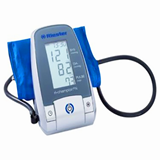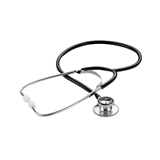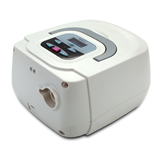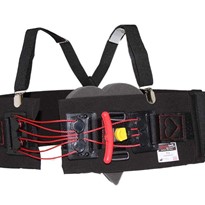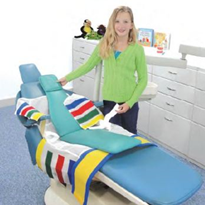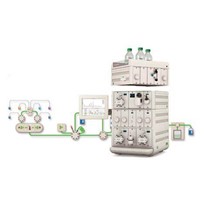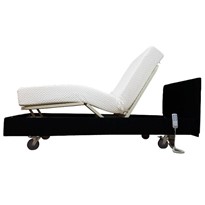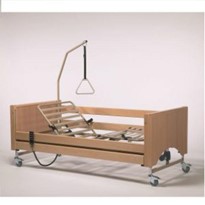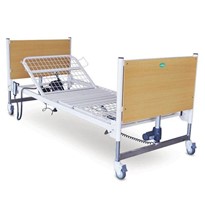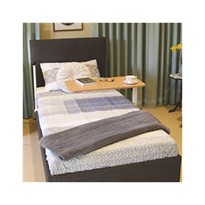Benefits Regarding Home Management of Hypertension
Out-of-office readings obtained through home blood pressure monitoring has numerous benefits. Home blood pressure monitoring allows the physician to obtain readings in the patient’s natural environment where blood pressure (BP) measurements tend to be lower than those taken in a clinical setting. The average of BP readings throughout the day is perceived to be a better representative of the patient’s true blood pressure than a single in-office reading. As a result, home blood pressure monitoring can help combat misclassification of hypertension in the clinic caused by the white-coat effect, clinician technique, equipment, patient health and activities the patient participated in prior to the exam.
Home blood pressure monitoring can also provide the physician with information on the patient’s response to medication allowing the care plan to be adjusted as necessary. Therefore, self-measurements can improve patient adherence to hypertension therapy resulting in the progression towards designated BP goals.
Home blood pressure monitoring may be a more feasible option than ambulatory blood pressure monitoring due to its convenience, affordability and availability. Unlike ambulatory blood pressure monitoring, home blood pressure monitoring does not necessitate clinical staff training, require the patient to wear the monitor for 24 hours or limit physical activity.
Selecting a Home Blood Pressure Monitor
Many home blood pressure monitors are available for retail purchase. When shopping for a home blood pressure monitor, the patient should make sure their device meets the following criteria:
- Trusted by doctors: Select a device that is recommended by healthcare providers for effective blood pressure management.
- Accuracy: The American Heart Association recommends an automatic, upper arm monitor; wrist and finger monitors are not recommended as they yield less accurate results.
- Proper cuff size: Ensure the cuff fits properly—using too small of a cuff is the most common error in blood pressure measurement.
- Comfort: Seek maximum comfort with a device that takes readings in less than 30 seconds.
- Smart connectivity: Share your readings with a physician or caregiver using a connected device.
For example, Hillrom offers a clinician-connected home blood pressure monitor that allows the patient to take their blood pressure at home. Bluetooth® technology helps the patient make progress towards their goals by allowing them to store and track their BP readings and send data to their physician for review.
Proper Technique for Measuring Blood Pressure at Home
It is vital for the patient to use proper technique when measuring blood pressure at home to ensure accurate readings. 82% of physicians agree that most patients do not follow the correct steps to obtain accurate blood pressure readings when monitoring BP at home. Before recommending home blood pressure monitoring, the patient must be educated on home BP measurement techniques:
- Roll sleeves: Place the blood pressure cuff on your bare upper arm.
- Cuff application is important: Allow room for no more than two fingers. The tube should run down the middle of your forearm, with the bottom of the cuff two finger widths (about one inch) above the bend in your arm.
- Proper posture: Sit in a chair that supports your back; keep legs uncrossed and feet flat on the floor.
- Arm at heart level: Support your arm on a flat surface; ensure the cuff is level with your heart.
- Rest quietly: Sit quietly for five minutes prior to taking a reading.
- Be still: Keep your arms still during the measurement cycle.
The patient should be instructed to take at least two readings one minute apart each morning, and each evening before dinner. Ideally, the patient should aim to obtain weekly readings two weeks after a treatment change and the week prior to an appointment with their physician.
It is crucial the patient records all BP readings accurately. The patient can capture measurements via a blood pressure monitor with a built-in memory or by physically writing down readings, including numbers, date and time. The patient should either send readings to the physician electronically or bring their log of blood pressure readings to the appointment. For clinical decision making, the patient’s average blood pressure should be based on readings from two or more separate occasions.
Lastly, the patient should use the same validated instrument when measuring blood pressure at home so the physician can accurately compare results.
Limitations Regarding Home Management of Hypertension
Although home blood pressure monitoring can provide physicians with great insights regarding a patient’s true BP, there are still some difficulties with this method. For example, home blood pressure monitoring is dependent on patient effort and engagement (i.e., proper technique, communication with their physician) to obtain high-quality data. Additionally, there may be data gaps with this method such as the lack of BP recordings during sleep.
Key Takeaway
To help confirm and manage hypertension, home blood pressure monitoring is considered a viable method. Its out-of-office BP readings provide physicians with critical data including the patient’s blood pressure in their natural environment and response to treatment.



